
Fartons with horchata
We are of good habits, especially with things to eat. And breakfast is one of the most special moments of the day; so much so that we even repeated it twice in the same morning (pure vice).
But globalization is also an 'early riser' , and coffee with milk, toast, orange juice, churros, grilled croissants and other pastries are already found in almost any corner of the geography. So today the challenge is different.
Identify those breakfasts -some traditional, others caloric and some incomprehensible at 8 in the morning- that are exclusively associated with certain localities or regions . Ultimately we are doing nothing but searching one more excuse to travel and eat ; although you have to get up early to enjoy it as it deserves.
1. FARTONS WITH HORCHATA - ALBORAYA, VALENCIA
The farted , how to say in Valencian, It is an elongated sweet pastry with a sugar glaze very very typical of Valencia, but above all of the Valencian municipality of Alboraya, where it originates. And we can't talk about fartons or fartó without referring to the horchata, because it is a bun expressly created to be enjoyed with the tiger nut drink.
The most curious thing is that they have taken more than 700 years in finding the ideal sweet because, according to legend, ever since King Jaime I baptized horchata as 'liquid gold', the horchata makers of Alboraya have tried to find a perfect sweet to accompany it.
And everything indicates that they have found it, because since the 1960s it is unimaginable to think of horchata without these fluffy 'panquemao' buns, perfect for dipping in both winter and summer.
- The historical fartóns of Alboraya: Fartóns Polo, since 1939
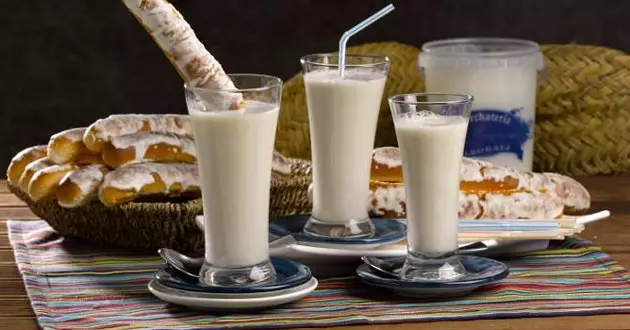
A myth of the Valencian breakfast: and with horchata, of course
2.**WEAVINGS - RONDA, MÁLAGA**
With the permission of the people of Malaga, we will say that they are like churros. In fact, the same ingredients are used -flour, water, a pinch of salt and yeast- but they differ in some points that make them unique, as the tool used to make them and that, by the way, is the one that gives them their name: weaving , a syringe-shaped instrument into which the dough is poured and then poured into the pan and fried.
The weaving is easy to recognize because It is usually presented strung or enristrado in a reed , and it is usually accompanied by hot drinks, such as hot chocolate, coffee with milk or even anise to dip it in. The latter only for brave morning people.
_* A place to drink it: Tejeringos' Coffee, Málaga _
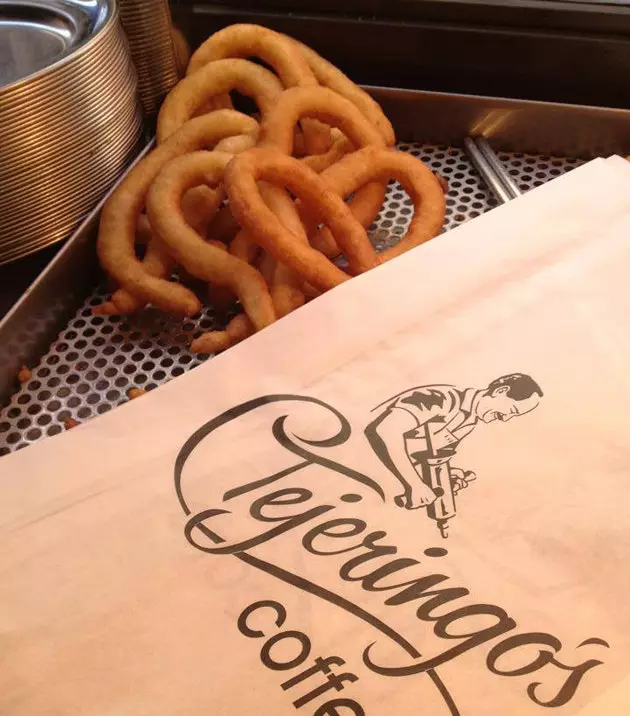
They are not churros and they are from Malaga
3. . SUSO, CHUCHO OR XUIXO - GIRONA
We start with one of the less light but at the same time more exquisite and careful versions of this list.
Suso is a sweet thin dough, fried, filled with cream and sugared on the outside that usually accompanies a coffee with milk. It is typical, very typical of Girona, although the writings point out that its origin is French, when in 1920 a confectioner from the neighboring country taught its preparation to a confectioner from Giron.
Beyond Girona, suso can also be found in other nearby provinces. But the really curious thing is that a pastry and candy brand popularized the chocolate-dipped version of suso years ago, revolutionizing the snacks of the 80s and 90s , and displacing the traditional chorizo sandwich that our mothers insisted on giving us for snacks.
_* A place to have it: Pastisseria Càtering Castelló, Girona _
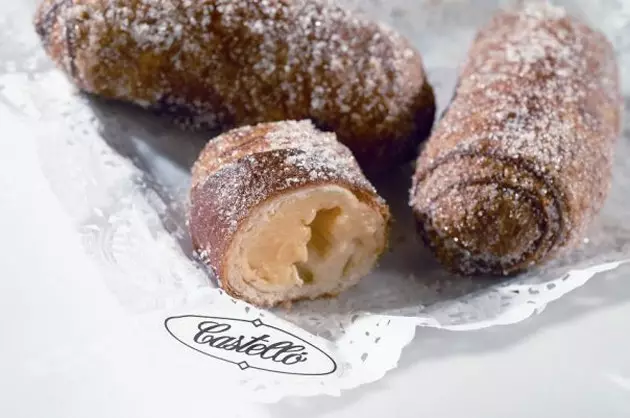
Suso, Xuixo, Xuxo... filled with cream and well sweetened
Four. CACHUELA - BADAJOZ
We arrive **at the caloric moment, at the excess of everything (and everything delicious) ** par excellence. We are in Badajoz. The obsession of the inhabitants of Badajoz with having breakfast away from home has its maximum expression in the bait : pork liver fried in lard with garlic, onion, paprika and other spices , which is mashed and cooked at the end. Almost nothing.
Connoisseurs say that cachuela tostadas must have a good proportion of liver and lard, and for the waiter to understand us, we must ask for it as 'red cap' (due to the characteristic color of butter) ; They will serve it to us as if it were a pâté, to spread on toast, and is usually accompanied by a coffee with milk.
In contrast to the red one is the white or butter toast, probably the lightest toast that can be eaten for breakfast in Badajoz. Note: it is not accompanied by jam unless specified , and the butter is not served by each one, but they do it in the kitchen. _* Where to try cachuela: Churrería La Corchuela, Badajoz _ 5. POTATO CAKE - MALLORCA
We do not want the ensaimada to be offended, but we have to say that the coca de patata is also one of the most typical breakfasts in Mallorca. And, although its star ingredient is the potato, it is far from something salty, but rather a sweet, very sweet.
It is a cake made from eggs, almonds, lemon zest and sugar. , but with a particular feature : does not contain flour. It has been replaced by mashed potatoes – something that, by the way, makes it suitable for coeliacs -.
The result is a very juicy and fluffy dough that is usually accompanied by a glass of almond milk or a glass of chocolate. this is really a breakfast jealous. _* A place to try it: Ca'n Molinas, Valldemossa (Majorca) _
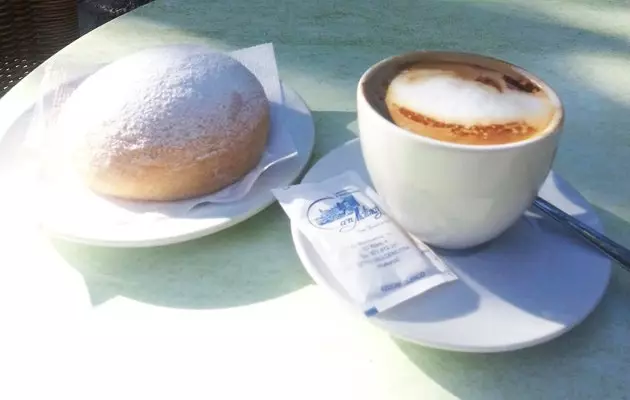
Potato Coke from Ca'n Molinas, in Valldemossa
6. BREAD WITH BUTTER - SORIA
Okay, at first glance it looks like one of the most common breakfasts that we can find out there. But if we say that it is a genuine product from Castilla y León, with three varieties -natural, salty and sweet- recognized with Protected Designation of Origin, the thing changes.
Soria butter is made with milk from cows raised in adverse climatic and altitude conditions -it is one of the provinces with the highest average altitude (1,026 meters) and the most rugged on the plateau-, which, together with the composition of the pastures, hard and dry, and its characteristic flora, they make the milk have some peculiar qualities that are transmitted to the butter, providing a genuine texture and flavor.
* Butter from Soria website, with Protected Designation of Origin
7. COFFEE WITH MILK AND TORTILLA PINCHO - MADRID
Who came up with the crazy and brilliant idea of combining at the same time a sip of coffee with milk and a bite of potato omelette ?
This fusion, which many describe as an incomprehensible mix of flavors -sweet and salty- and schedules -breakfast and lunch-, is a must in any of Madrid's bars from very early hours. And that is why we have included it in this list of breakfasts, for its originality and daring.
_* Where to taste a good tortilla pincho: La Ardosa, Madrid _
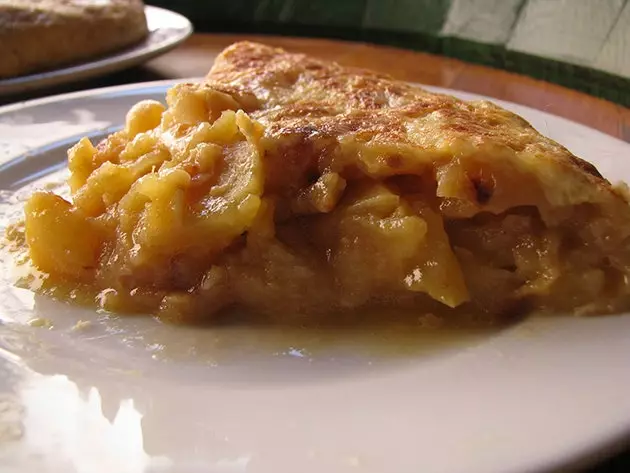
Potato omelette from La Ardosa (Madrid)
8. MIGAS WITH CAVA - ALMENDRALEJO, BADAJOZ
Yes, we are serious. Migas is one of the most typical dishes of Extremadura , which is made with stale bread and garlic, all well-fried in olive oil.
Paprika is usually added and accompanied by pork rashers, sausages, peppers and sardines, all fried as well, and presented with something sweet to put in your mouth, such as grapes or figs, depending on the season.
Despite its forcefulness, it is common to find it on the breakfast menu of bars in the region, and in Almendralejo, a town known for belonging to the Cava Region, as determined by the Regulatory Council, They go a little further: they dare to combine them with a glass of cava. And it is that to try a combination like this, the least important thing is the time.
- _Where to drink it: El Abuelo, Almendralejo (Badajoz) _
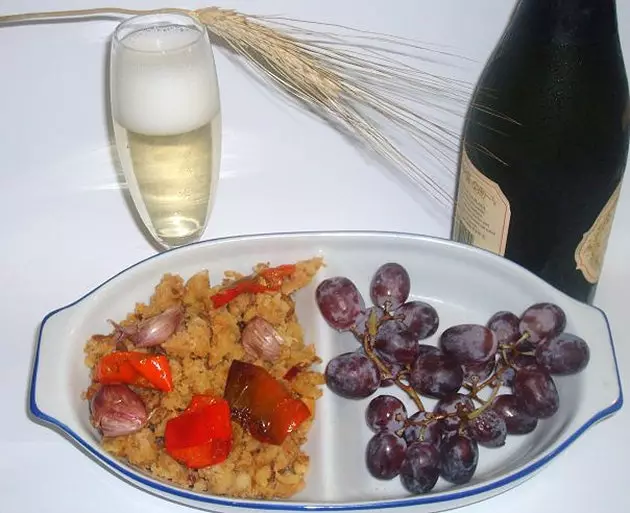
Migas from El Abuelo cafeteria with grapes and cava in Almendralejo
9. MILK WITH GOFIO - CANARY ISLANDS
The gofio is a great unknown outside the Canary Islands, but there it can be said that it is one of the most emblematic products of any islander's diet, even at breakfast, where it can be consumed with milk as if it were cereal.
For those who are unaware of typical Canarian gastronomy, we will say that it is a food made from cereals, preferably wheat, millet or barley, roasted and stone-ground ; once they are well crushed, a pinch of salt is added.
As well as as a mixture of cereals for milk, it can be consumed as a sweet 'pella', or what is the same, as a dough made with gofio, water and cane syrup , to which almonds, raisins and other dried fruits are added. Quite a feast.
_* A place to have milk with gofio for breakfast: Bodegas Monje in Tenerife _
10. CHEESE OR CEBREIRO - GALICIA
In Galicia they feel true passion for cheeses and can boast of their varieties ; four of the 25 DO of Spanish cheeses are concentrated in Galician soil. That is why it is not surprising that they have cheese even at breakfast -not even in the soup-. One of the most appreciated both first thing in the morning, as in the appetizer or even in the dessert, it is the O Cebreiro cheese - at first glance it is easily recognizable, because when it is wrapped resembles a chef's hat. With a slightly acid taste, it is made mainly from cow's milk and is highly appreciated for being totally natural and containing no preservatives or additives. It is best savored by adding a sweet touch, based on honey, quince flesh or simply fruit. For those who are already thinking in terms of calories, also think that the day is too long to burn them all. So no worries. _* 50 recipes with O Cebreiro cheese _
eleven. SOBAO PASIEGO - CANTABRIA
East typical sweet, made from flour, sugar and lots of butter , has its origin in the Cantabrian valleys of Pas. Well, it is a very common sweet in the rest of Spain, so much so that It is not necessary to travel to Cantabria to eat a sobao ; with going down to the nearest supermarket, all arranged. But we cannot and do not dare to compare one packaged with another freshly made, it is not the same. Something has to be noted r the home tradition of more than 100 years , handed down from generation to generation among Cantabrian families and made in the traditional style. Its flavor and aroma are very characteristic, and it is worth it accompanied by a coffee with milk or even plain milk, because here the important thing is to wet it.
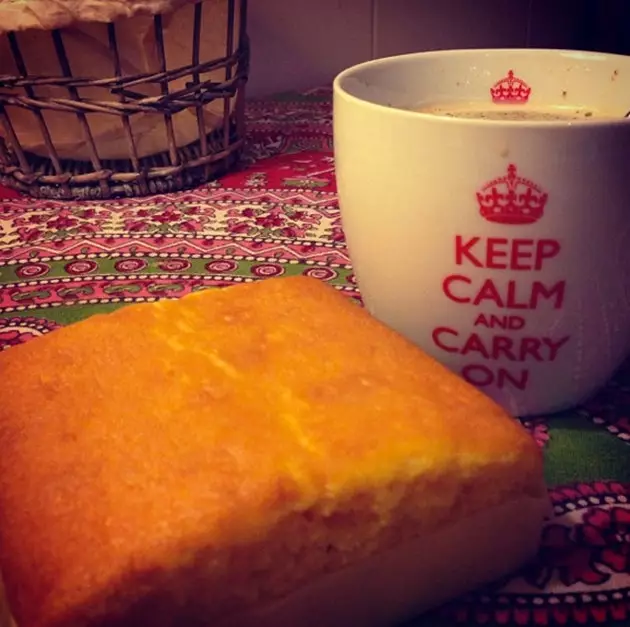
Keep calm and have a sobao pasiego
